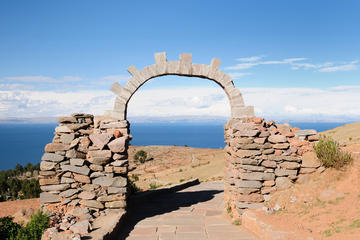
Amantani Island/Isla Amantani
For those wishing to avoid heavily touristed Taquile Island, but still enjoy a smoothly operating system of homestays and a taste of traditional lake lifestyle, Isla Amantani is the perfect option. The 38km (26mi), four-hour trip and dearth of infrastructure (electricity, running water, automobiles) has kept the island of some 3,600 Quechua-speaking people somewhat isolated from Titicaca’s tourist industry.
Amantani has been communally owned since shortly after Peru’s independence from Spain, after which the indigenous residents—used as poorly paid labor by landlords of European descent—took a page from their oppressors’ own handbook and staged a revolution of their own. Ever since, the island has been run as something of a commune, a tradition that extends to today’s tourism.
Upon arrival, visitors are assigned to a family and its small adobe home; some are much nicer than others. Toilets look modern, but don’t flush; you’ll use buckets of water provided. Your host family also provides simple meals, made with locally available foodstuffs such as potatoes, quinoa, eggs and perhaps lake trout. Some guidebooks recommend bringing fruit, cooking oil, rice or sugar—all difficult-to-obtain delicacies in this isolated spot—as gifts.
Your family can also arrange guided hikes, perhaps even in English, around the scenic island. There are two mountains, Pachatata (Father Earth) and Pachamama (Mother Earth), terraced with beautiful farms, which you can climb—slowly, remember your altitude. Pre-Columbian temples top both peaks and are still used on traditional feast days.
As on Taquile, Amanti islanders knit and weave the region’s renowned textiles, which are offered for sale around the island. Host families will typically dress visitors in traditional clothing for a nightly dance, accompanied by a local band.
